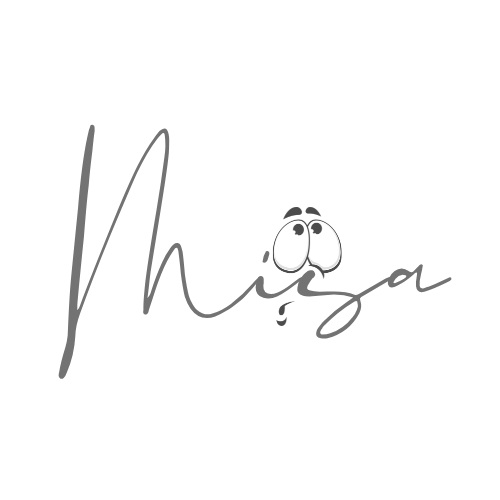misa, The Man
The refusal to perform
Misa does not capture images. He captures presence.
In a world obsessed with filters, control, and digital masks, he stands for something radical: the unedited self.
His art is not decoration, it is confrontation.
It asks a single, disarming question: Can you be real for a moment longer than usual?
Misa’s path was not carved by success, but by failure understood as revelation.
He has built companies, dismantled illusions, and confronted the cost of integrity.
Every collapse refined him, every disillusionment became a teacher.
He learned that clarity is not comfort. It is discipline.
And that beauty, stripped of artifice, becomes truth in visible form.
To meet Misa is to meet someone who does not perform his identity, he inhabits it.
He stands in the tension between art and ethics, between vision and reality.
He does not preach authenticity. He practices it.
The philosophy behind “I DO ME”
“I DO ME” is Misa’s declaration of authorship, not of ego, but of responsibility.
It means: I will not imitate systems. I will not seek permission. I will not edit my truth to fit.
For him, this is not a slogan; it is a spiritual act.
It is what happens when an artist stops performing for the world and starts answering only to conscience.
He believes that every human being carries an inner frequency, their own unrepeatable rhythm of being.
To “do me” is to live in that frequency without distortion.
That is Misa’s work: to tune himself, and those he photographs, back to their original tone.
The Method
Situationism as practice
Misa calls himself a situationist photographer, because he doesn’t shoot, he creates situations.
Moments where truth can appear, uninvited and unpolished.
There are no poses.
No instructions.
No rehearsed vulnerability.
He meets his subjects in silence, in gaze, in the thin line where self-awareness dissolves.
What emerges is not representation, but revelation, a brief moment where reality and person coincide.
Each portrait is a dialogue, not a capture.
Presence over perfection
In Misa’s world, the studio is a laboratory of presence.
He treats photography as a form of psychological and spiritual research, an inquiry into what remains when performance ends.
He believes that to ask for authenticity, one must first live it.
That is why he never demands vulnerability he hasn’t faced himself.
His process is slow, unfiltered, and imperfect, by design.
It’s how truth breathes.
The result is not an image, but a trace of an encounter.
The 25-Year Chapter: “I DO ME”
Beginning in 2025, Misa dedicates twenty-five years to a single unfolding work, an autobiography written through the faces and presences of others.
The first chapter, spanning 2025–2030, is devoted to women creators, thinkers, leaders, and dreamers who embody real, unindustrial beauty.
Each portrait becomes a fragment of Misa’s own becoming,a mirror through which he writes his life in shared truth.
This is not a project.
It is a pilgrimage, from imitation to authenticity, from posing to presence.
Legacy through self-possession
Misa does not seek fame, followers, or validation.
He seeks continuity, the kind of legacy that belongs only to time.
He believes that real art cannot be viral because it resists compression.
It must be lived, not consumed.
His legacy will not be measured by quantity, but by the truth of the encounters he leaves behind.
That is the quiet revolution of “I DO ME.”






